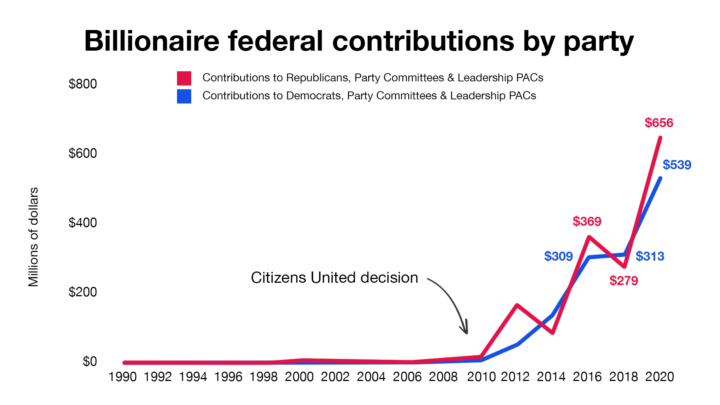
Credit…Juan Carlos Pagan
Dear Commons Community,
The New York Times has an article this morning describing how A.I., can be used to significantly reduce fatalities due to car accidents. It focuses not on self-driving cars but simpler approaches that can make roads much safer. It sound like an idea whose time is about here and needs the ccooperation and interest of major automobile manufacturers to evaluate and implement. Here is an excerpt. The entire article is below.
“Each year, about 1.35 million people are killed in crashes on the world’s roads, and as many as 50 million others are seriously injured, according to the World Health Organization. In the United States, fatalities rose drastically during the pandemic, leading to the largest six-month spike ever recorded, according to estimates from the U.S. Department of Transportation. Speeding, distraction, impaired driving and not wearing a seatbelt were top causes.
Artificial intelligence is already being used to enhance driving safety: cellphone apps that monitor behavior behind the wheel and reward safe drivers with perks and connected vehicles that communicate with each other and with road infrastructure.
But what lies ahead? Can A.I. do what humans can’t? And will the technology develop before the proliferation of self-driving cars?
“In my view, there is too much hype around A.I., road safety and self-driving vehicles — it is super inflated,” said David Ward, president of the Global New Car Assessment Program, a nonprofit based in London. The focus, he said, should be on “the low-hanging fruit, and not on some far-off utopian promise.”
Advocates like Mr. Ward look to beneficial, low-cost, intermediate technologies that are available now. A prime example is intelligent speed assistance, or I.S.A., which uses A.I. to manage a car’s speed via in-vehicle cameras and maps. The technology will be mandatory in all new vehicles in the European Union beginning in July, but has yet to take hold in the United States.
Acusensus, based in Australia, is among the companies that employ artificial intelligence to address road safety. Its cameras — “intelligent eyes,” as Acusensus calls them — use high-resolution imaging in conjunction with machine learning to identify dangerous driving behaviors that are often difficult to detect and enforce.
“We’ve got technology that can save lives,” said Mark Etzbach, the company’s vice president of sales for North America.
Let’s do it!
Tony
———————————————-
The New York Times
Can A.I. All but End Car Crashes? The Potential Is There.
By Tanya Mohn
April 19, 2022
Each year, about 1.35 million people are killed in crashes on the world’s roads, and as many as 50 million others are seriously injured, according to the World Health Organization. In the United States, fatalities rose drastically during the pandemic, leading to the largest six-month spike ever recorded, according to estimates from the U.S. Department of Transportation. Speeding, distraction, impaired driving and not wearing a seatbelt were top causes.
Artificial intelligence is already being used to enhance driving safety: cellphone apps that monitor behavior behind the wheel and reward safe drivers with perks and connected vehicles that communicate with each other and with road infrastructure.
But what lies ahead? Can A.I. do what humans can’t? And will the technology develop before the proliferation of self-driving cars?
“In my view, there is too much hype around A.I., road safety and self-driving vehicles — it is super inflated,” said David Ward, president of the Global New Car Assessment Program, a nonprofit based in London. The focus, he said, should be on “the low-hanging fruit, and not on some far-off utopian promise.”
Advocates like Mr. Ward look to beneficial, low-cost, intermediate technologies that are available now. A prime example is intelligent speed assistance, or I.S.A., which uses A.I. to manage a car’s speed via in-vehicle cameras and maps. The technology will be mandatory in all new vehicles in the European Union beginning in July, but has yet to take hold in the United States.
Acusensus, based in Australia, is among the companies that employ artificial intelligence to address road safety. Its cameras — “intelligent eyes,” as Acusensus calls them — use high-resolution imaging in conjunction with machine learning to identify dangerous driving behaviors that are often difficult to detect and enforce.
“We’ve got technology that can save lives,” said Mark Etzbach, the company’s vice president of sales for North America.
The patent-pending technology, which unlike the human eye is unaffected by weather conditions or high speeds, can view and record behavior inside the vehicle, Mr. Etzbach said. Cameras can be installed on existing roadside infrastructure, like overpasses, messaging signs or movable structures. Images are then optimized for A.I., which is trained to specific parameters.
Acusensus’ algorithms can determine with a high degree of probability whether a particular driver is engaged in risky behavior, the company says. “We can assess distraction,” Mr. Etzbach said. “We can assess occupant restraint. We can assess vehicle speed. We’re able to look at three behaviors at the same time. Well over 90 percent of the behaviors are happening below the dashboard.”
Such technology would give law enforcement the ability to see clearly whether a driver is holding something besides the steering wheel — like a phone, perhaps — and whether that driver is looking down to text someone. (An invisible flash enables clear penetration of the windshield.)
The technology was developed by Acusensus’ co-founder, Alexander Jannink, after a friend and fellow software engineer was killed while biking in 2013. “He got struck and killed by an impaired driver that was also believed to be distracted,” Mr. Etzbach said.
The company’s primary product, Heads-Up, was first rolled out in 2019 in New South Wales, Australia. The Heads-Up system captures images that are later screened by the authorities for the likelihood of an offense. In the first two years, the company says, the state experienced a 22 percent reduction in fatalities and a reduction in phone use of more than 80 percent. The technology is currently deployed in New South Wales and Queensland, with additional pilot projects elsewhere in Australia and abroad.
The next iteration of the technology, Heads-Up Real Time, is being proposed for deployment in the United States. Data and images would be sent in real time to officers in patrol cars, which they can then view on laptops.
“It’s about being able to leverage technology, and A.I. in this case, to help us better understand what people are doing behind the wheel that potentially puts themselves and others at risk,” said Pam Shadel Fischer, senior director of external engagement for the Governors Highway Safety Association, a nonprofit representing state highway safety offices. “We think there’s real potential here.”
When there is high-visibility traffic enforcement — officers in marked cars, for example — Ms. Shadel Fischer said that “people behave better, they slow down, they put their phones down and they buckle up.”
She continued: “They do things they’re supposed to do. But we also know that we can’t put an officer on every road, so we’re always looking at technology that can help.”
Acusensus’ technology can also be used to identify “hot spots,” helping determine where officials may need to improve enforcement, make changes to infrastructure or adopt new legislation. In recent months, the company conducted demonstrations and evaluations for a number of local law enforcement agencies and state transportation departments.
During an 18-hour assessment in August of a high-risk corridor in Missouri that was averaging three and a half crashes a day, more than 11,000 vehicles drove by. At least 60 percent of the drivers were speeding; an average of 6.5 percent were using mobile phones, more than twice the national average; and just under 5.5 percent were engaged in two concurrent risky driving behaviors.
“They had one of their record years for road fatalities last year,” Mr. Etzbach said. “They want to change policy to be able to address some of these road safety issues.”
The technology is gaining interest at the state level. “We have contracted with two states for data projects, and are in discussion with many more,” Mr. Etzbach said. One of those states, Indiana, “is piloting the technology for the evaluation of enforcement deployability.”
Technology similar to Acusensus’ is also being considered in Europe. Alexandre Santacreu, secretary general of the European Metropolitan Transport Authorities in Paris, said large-scale data collection has huge potential for use in preventing collisions across road networks. “A.I. is data hungry, but currently there is very little data in the hands of road authorities,” he said.
In Barcelona, Spain, a recent trial used computer vision technology on city buses to map places along the route where there were conflicts with vehicles, pedestrians and others, to identify where accident risks were highest. “When you collect that kind of data for an entire year with thousands of buses and thousands of streets, you get somewhere,” said Mr. Santacreu, who wrote a report on A.I. and road safety published by the International Transport Forum. “This approach is not widely embraced, but should be. I would recommend every city to test it.”
Computer vision technology uses A.I. to make sense of raw video feeds — in this case, from bus cameras that record road layouts, positions of pedestrians and vehicles, and speed. The video data is often destroyed after it is processed to protect privacy, Mr. Santacreu said.
In regions where precise and relevant data exists, the report noted, “A.I. can identify dangerous locations proactively, before crashes happen.” In Bellevue, Wash., a recent assessment used advanced A.I. algorithms and video analytics at 40 intersections.
It is important that governments share data widely and make room for data marketplaces, “because they are the best way to procure quality data,” Mr. Santacreu said. “I’m optimistic that, ultimately, if we can take all this data and find a way to employ it, we get closer to Vision Zero.”
The goal of Vision Zero, first introduced in Sweden in the 1990s and now embraced by many cities globally, is to eliminate all road deaths and serious injuries by creating multiple layers of protection, so if one fails, others provide a safety net.
Not everyone is sold on a reliance on computer learning. Mr. Ward, of the Global New Car Assessment Program, said humans still outperform artificial intelligence.
“An observant driver who makes eye contact with a pedestrian can gauge whether or not there’s an intention for that person to cross the street. A.I. is not able to do that, not yet,” he said. “We know that A.I. has a tremendous capacity to improve, but we could be making a big mistake if we think that it can completely eliminate the human dimension in all of this.”
As with many A.I. innovations, the technology also raises privacy issues.
“It’s this classic question about how much intrusion we want in our lives to keep ourselves safe,” Mr. Ward said.
“We share our road space and there are limits to our liberty in the closed environment of cars, but it does imply a greater degree of intrusion,” he said of monitoring technology. “This is what A.I. is bringing to us.”












